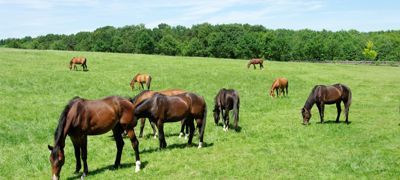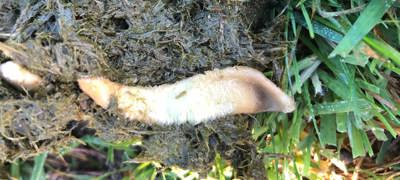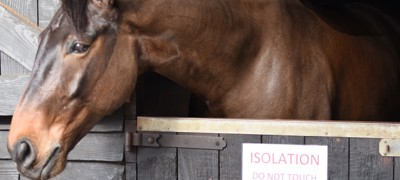With the increase in resistance to dewormer drugs and the damage they can cause to the environment it is important that we make sure every treatment is strictly necessary and we are not using drugs when they’re not needed.
Small Redworm (small roundworms, Cyathostomins)
- Up to 2.5cm long, thin and usually reddish in colour (the unfed worms appear white).
- The most common threat to horses, with more than 50 different species.
- A short life span of 5-6 weeks
Signs
All horses will have some small redworm and in small numbers they cause no problems. Faecal Worm Egg Count (FWEC) should be used regularly to identify the number of eggs that are being produced by adult worms. When levels of egg shedding get high, treatment of individual horses may be needed to limit contamination of pasture and prevent infection. If redworms are not monitored and levels of infection become high, then horses may grow more slowly (young animals) or lose weight.
At their immature (larval) phase, redworms become encysted (buried into the lining of the intestine) and cannot be identified on FWECs, as they don’t lay eggs at this stage. Horses that are badly affected with an encysted burden may develop severe weight loss and potentially life-threatening diarrhoea. It is therefore important that the population of horses are monitored with FWECs and pasture is well managed to make sure the levels of infection with redworm eggs is kept to a safe level.
An estimate of exposure to small redworm can be made from a blood test and if necessary specific treatment can be administered to remove both adult and larval stages. However, prevention through good management and monitoring is far better and safer than relying on treatment once infection has developed.
Large Redworm (Strongyles)
- Dark red in colour, up to 5cm long.
- Can travel along blood vessels, causing blockages that could damage vital organs.
- Numbers have greatly reduced over the last 20 years due to the development of more effective deworming regimens. Disease associated with this worm is now exceedingly rare.
Signs
- Unexplained loss of condition / weight
- Anaemia - commonly presented through, weakness and a lack of energy
- Dull coat
- Colic
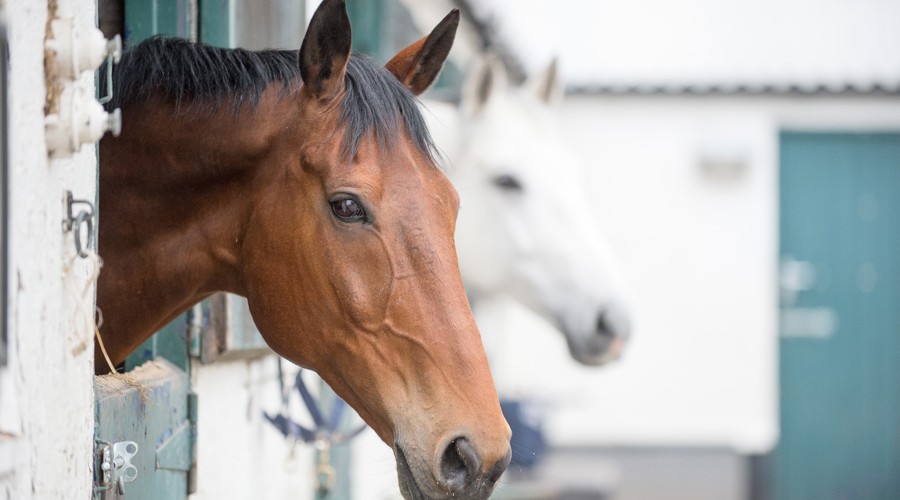 play-circle
play-circle
Watch
The Lifecycle of Redworm
Tapeworm (Cestodes)
Small, flat segments that are cream in colour and join together, they can be up to 20cm long. Tapeworm segments containing eggs are passed in horse droppings, the eggs are then ingested by a mite living in the soil or bedding, which acts as a host. The mites are then ingested by the horse while it grazes, the larvae are released, and they develop into adults.
Tapeworm live near the junction between the small and large intestines and fix on to the horse’s gut wall living off food that the horse eats.
Signs
- Attachment of the tapeworm to the intestinal wall may cause inflammation leading to impaction and other types of colic.
- Disease is uncommon and typically affects young horses that haven’t had treatment for tapeworms. It is important that exposure to tapeworm is monitored, and treatment only administered if high levels of infection are identified.
A saliva test or blood test may detect antibodies to tapeworm.
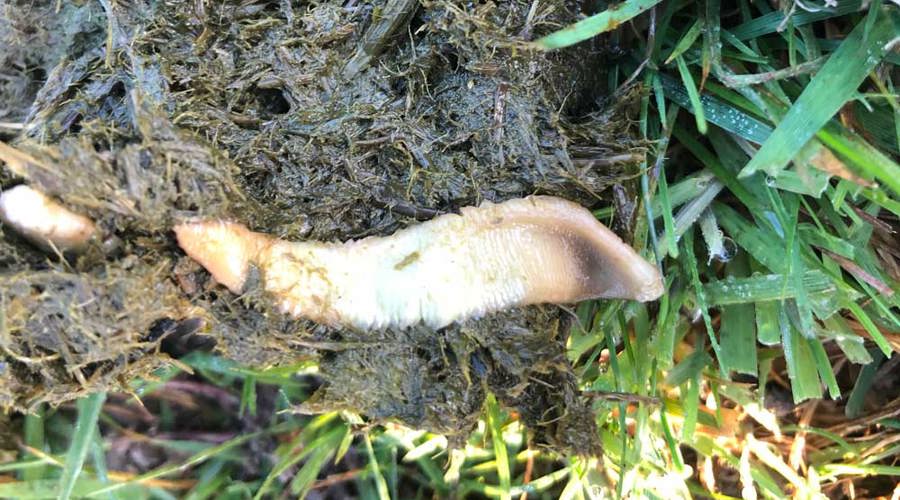
Ascarids (Parascaris, roundworm)
Large creamy white worms, up to 40cm in length. Larvae ingested by the horse reach the small intestine, travel to the liver and then on to the lungs, feeding at each stage. The larvae then travel up the windpipe causing irritation and coughing, resulting in them being swallowed back into the small intestine. Here they reach maturity and eggs are shed into the horse’s faeces.
These are primarily a problem in foals and to a lesser extent yearlings because their immune system has not yet fully developed. Ascarids are now resistant to most types of dewormer drugs, so it is essential that good management practices are used to reduce the level of infection and prevent disease. Ascarid levels in foals should be monitored using FWECs and check annually for resistance using a FWEC reduction test.
Signs
- Dullness, or poor growth.
- Coughing and signs of lung disease
- Severe burdens may result in obstruction of the small intestine leading to colic that can only be resolved with surgery
Pinworm (Oxyuris)
- Eggs are ingested and travel through the intestines until they reach the rectum where they develop into adults. Once mature, the female adults travel to the horse’s anus and lay their eggs.
Signs
- Pinworm do not cause internal damage. They can cause itching around the anus and tail-rubbing, as a result of the eggs and sticky fluid being laid in this area become an irritant.
- This itching can cause damage to the skin around the dock which may lead to skin infections and further problems.
Bots (Gasterophilus)
- Bots aren't worms but rather flies common over the summer months that lay their yellow eggs onto the hairs of the horse (most commonly the forelegs, belly, flanks, shoulders and under the chin).
- The horse then grooms or licks itself, ingesting the eggs, and causing them to hatch into larvae. The larvae then burrow into the horse’s gums and beneath the tongue.
- The larvae stay inside the horse’s mouth for around one month until they are swallowed and then attach on to the stomach wall where they lie inactive for around 8-12 months.
- They then release themselves and are passed in droppings where they bury themselves into the soil and emerge as an adult fly 20-30 days later.
Signs
- Although they look unpleasant, they are not known to cause disease in the horse.
- Treatment using dewormer drugs should not be necessary and if owners are concerned, they can use a ‘Bot Fly Knife’ to scrape off any eggs laid on their horses to help break the cycle.
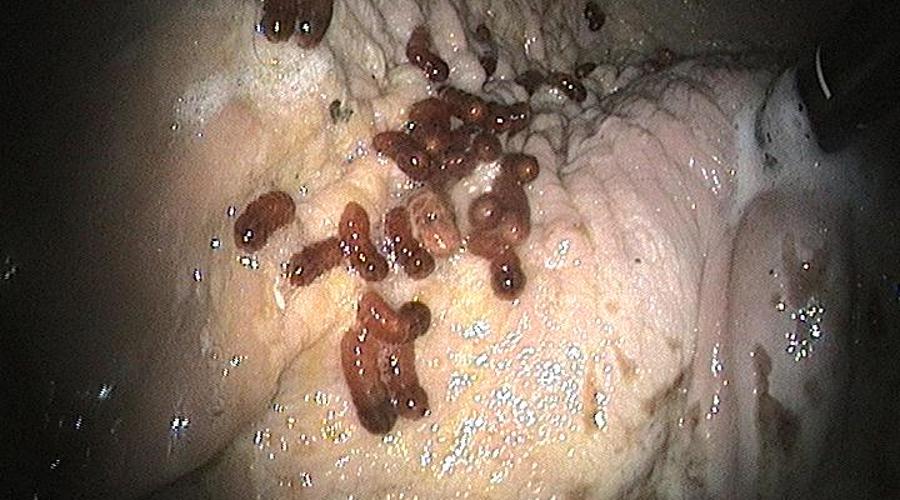
Threadworm (Stronglyloides)
- Threadworm most commonly affects foals up to 6 months of age but often remain inactive in adult horses.
- Mares may hold threadworm larvae in their mammary tissue (teat) which are then transferred to the foal when they suckle. See our guidance on worming the mare and foal.
- A threadworm infestation may cause signs of weakness and diarrhoea in young foals.
Lungworm (Dictyocaulus arnfieldi)
- A lung worm predominantly affecting donkeys.
- Ingested larvae travel from the intestine through the circulatory system to the lungs where they develop into adults.
- Lungworms may grow up to 8cm long.
- Horses and donkeys can live together quite safely, provided an appropriate worm monitoring programme is followed.
Signs
- Symptoms may include persistent cough and loss of appetite.
Donkeys
For deworming advice specific to donkeys visit The Donkey Sanctuary website.




